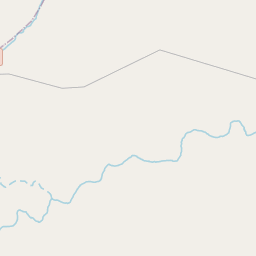Eagle Pass Coal Mines
Historical marker location:






Although the Indian, Spanish, and early anglo-American inhabitants knew of this area's large bituminous coal deposits, commercial mining did not begin until 1885, when F. H. Hartz opened a hillside mine near the Rio Grande. For a time, it was the largest producing mine in Texas, but damage from an 1892 fire caused it to close several years later. Hartz then started another mine for the Maverick County Coal Co., which evolved into the Olmos Coal, coke, and Oil Company. Under direction of Pasquale and Rocco DeBona, this company reached a production peak of 1,200 tons a day. Another mining operation was the Eagle Pass Coal and Coke Company, formed in 1893 by Louis Dolch, J. B. Dibrell, and Emil Moshiem. Their mines (.25 miles south) supplied fuel for Southern Pacific Railroad locomotives until 1902. The town of Dolchburg, now called Seco Mines, was built in 1905, with housing for 90 workers. After Dolch's death in 1907, the International Coal Mine Company took over the operation. By 1910, this firm employed 350 men and produced about 1,000 tons of coal a day. Competition from oil, natural gas, and other fuels caused the mines to decline. The main Olmos Co. shafts closed in 1912, but Olmo's Lamar Mine (3.5 miles northeast) and the International Co. Mines were operating as late as 1925. (1975)
As one of the most visible programs of the Texas Historical Commission (THC), historical markers commemorate diverse topics in Texas history, including: the history and architecture of houses, commercial and public buildings, religious congregations, and military sites; events that changed the course of local and state history; and individuals who have made lasting contributions to the state, community organizations, and businesses.
Texas has been a major oil-producing state for over a century. The first big oil discovery in Texas was the Spindletop field near Beaumont in 1901, which set off a massive oil boom that transformed the state's economy and made Texas one of the wealthiest states in the country.
During the 19th century, Maverick County experienced significant growth with the arrival of Anglo-American settlers. The Texas Revolution of 1836 and the subsequent establishment of the Republic of Texas brought increased interest in the region. The need for protection against native tribes led to the construction of Fort Duncan in 1849, which quickly became an important military outpost and played a strategic role during the Mexican-American War (1846-1848).
The arrival of the railroad in the late 19th century further fueled the county's growth and development. In 1881, the International-Great Northern Railroad reached Eagle Pass, the county seat, linking Maverick County to regional and national markets. This connectivity facilitated the expansion of agriculture, particularly cattle ranching, and boosted trade and commerce within the county.
In the 20th century, Maverick County experienced a series of economic and political shifts. The discovery of oil and gas reserves in the early 20th century brought increased industrial activity and wealth to the area. However, economic instability and political corruption also plagued the county throughout this period. Efforts to combat corruption and improve infrastructure and services have been ongoing, with varying degrees of success.
Today, Maverick County continues to evolve as a vibrant and diverse community. It is home to a mix of agriculture, ranching, and industrial activities, and its proximity to the U.S.-Mexico border plays a significant role in its economic and cultural identity. The county's history is celebrated through various heritage sites, including Fort Duncan Park and historical museums, allowing residents and visitors to explore its fascinating past.
Maverick County Timeline
This timeline provides a glimpse into the major events and milestones that have shaped the history of Maverick County, Texas.
- 1870 - Maverick County is officially established as a county in Texas.
- 1871 - The county seat is established in Eagle Pass.
- 1872 - The railroad reaches Eagle Pass, bringing economic growth to the area.
- 1874 - Fort Duncan is established in Eagle Pass to protect the region during conflicts with Native American tribes.
- 1904 - The Maverick County Courthouse is built in Eagle Pass.
- 1933 - A major flood devastates Eagle Pass and causes significant damage in Maverick County.
- 1942 - The Eagle Pass Army Airfield is established and serves as a training base during World War II.
- 1989 - The Kickapoo Traditional Tribe of Texas opens a casino in Maverick County, providing an economic boost to the area.
- 2010 - The population of Maverick County reaches over 54,000.